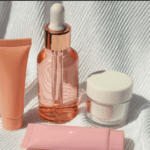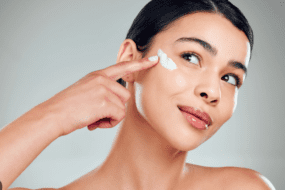
Introduction to Skincare Routines
Your skin deserves the best care possible, and creating a personalized skincare routine is key to achieving that glowing complexion you’ve always wanted. With so much information out there, it can feel overwhelming to know where to start. But fear not! Understanding your unique skin type paves the way for an effective regimen tailored just for you.
Whether you’re battling dryness, oiliness, or sensitivity, unlocking the right products and techniques will transform your skincare game. This guide breaks down everything you need to know about developing a routine that caters specifically to your needs. Let’s dive into the world of skincare routines and discover what works best for you!
Skincare routines can feel overwhelming, can’t they? With countless products and recommendations flooding the market, it’s tough to know where to start. But fear not! This guide is here to help you navigate the world of skincare based on your unique skin type. Whether you’re blessed with a smooth complexion or finding ways to combat dryness, there’s something for everyone.
Understanding your skin is the first step toward achieving that glowing look we all desire. From cleansing and exfoliating to moisturizing and protecting, each routine has its own nuances tailored just for you. So grab a cup of tea and settle in as we explore skincare routines designed specifically for every skin type out there! Your journey towards radiant skin begins now.
Identifying Your Skin Type
Understanding your skin type is the first step toward an effective skincare routine. It helps in choosing products that work best for you.
Start by washing your face with a gentle cleanser. Pat it dry and wait for about an hour without applying any products. This allows your skin to settle into its natural state.
Observe how your skin feels during this time. Is it tight or flaky? You might have dry skin if that’s the case. If it shines, particularly on the forehead and nose, you’re likely dealing with oily skin.
Combination skin often shows both characteristics—dry patches alongside oiliness in different areas. Sensitive skin may react quickly to environmental factors or certain ingredients, causing redness or irritation.
Identifying these traits will guide you to tailor a skincare regimen suited specifically for you.
Understanding your skin type is essential for creating an effective skincare routine. Each skin type has unique needs, and using the wrong products can lead to issues like irritation or breakouts.
To identify your skin type, start by observing how your skin feels throughout the day. If it often feels tight or dry, you may have dry skin. Oily skin tends to shine and feel greasy, especially in areas like the forehead and nose. Combination skin shows characteristics of both oily and dry types; usually, the T-zone (forehead and nose) is oilier while other areas are drier.
Sensitive skin can react to certain products or environmental factors with redness or itching. Normal skin generally feels balanced—not too oily nor too dry—and doesn’t experience sensitivity.
A simple test involves washing your face with a gentle cleanser and leaving it bare for about an hour. After this time, assess how it feels: tightness indicates dryness; excessive greasiness suggests oiliness; if you notice both conditions in different areas, combination might be at play.
Recognizing these differences will empower you to choose suitable products tailored specifically for your needs. A personalized approach ensures that you’re not just addressing existing concerns but also maintaining healthy-looking skin moving forward. Your journey toward radiant complexion begins here!
Skincare Routine for Combination Skin
Combination skin can be a bit tricky to manage. This type often features oily zones, especially on the T-zone, while the cheeks and other areas may be dry or normal.
Start with a gentle cleanser that removes impurities without stripping moisture. Look for hydrating ingredients like glycerin.
Next, consider using a lightweight toner. It helps balance oil levels and refreshes your skin without adding extra heaviness.
For serums, choose one that targets both hydration and oil control. Ingredients like hyaluronic acid provide moisture while niacinamide helps regulate sebum production.
Moisturizing is essential too—opt for an oil-free formula in your oily areas but feel free to use something richer on drier spots.
Sunscreen should be non-comedogenic; this keeps breakouts at bay while protecting against UV damage. Adjustments based on seasonality can also enhance your routine’s effectiveness.
Skincare Routine for Sensitive Skin
Sensitive skin requires a gentle touch. It’s prone to irritation, redness, and allergic reactions. Choosing the right products is key.
Start with a mild cleanser that soothes rather than strips your skin of its natural oils. Look for fragrance-free options containing calming ingredients like chamomile or aloe vera.
Next, consider a lightweight moisturizer designed specifically for sensitive skin. Ingredients like hyaluronic acid can hydrate without causing breakouts or aggravation.
Sunscreen is non-negotiable—choose mineral varieties with zinc oxide or titanium dioxide to protect against UV rays while minimizing irritation.
Incorporate soothing serums sparingly; look for those enriched with niacinamide or calendula to reduce redness and strengthen your skin barrier over time.
Always conduct patch tests before introducing new products into your routine to avoid surprises that could lead to discomfort.
Importance of Consistency in Skincare
Consistency is the backbone of an effective skincare routine. It’s not just about what products you use but how regularly you apply them.
Every skin type requires attention and care over time. Skincare isn’t a one-off task; it’s a commitment to nurturing your complexion daily. Missing days in your regimen can disrupt progress and lead to unwanted surprises.
When you stick to a routine, your skin gradually adapts and improves. With patience, results start showing up—whether that means reduced breakouts or increased hydration levels.
Moreover, consistent application helps ingredients work synergistically. They build upon each other for maximum effectiveness, reinforcing the benefits you’re trying to achieve.
Regularity instills good habits that promote overall wellness. The act itself becomes part of self-care—an empowering ritual rather than just another chore on your list.
How to Tailor Your Routine for Changing
Your skin is not static; it changes with seasons, lifestyle, and age. Adapting your skincare routine to these shifts ensures that you maintain healthy skin year-round.
Start by assessing your skin regularly. Check how it reacts to different environmental factors like humidity or temperature. For instance, during summer months, you may need a lighter moisturizer or a gel-based product to prevent greasiness. In winter, thicker creams can help lock in moisture and combat dryness.
If you’re experiencing breakouts or irritation that seems out of the ordinary for you, consider simplifying your routine temporarily. Focus on gentle cleansers and soothing products until balance returns.
Seasonal ingredients can also make a difference. Look for hydrating formulas rich in hyaluronic acid during dry spells, while opting for salicylic acid or exfoliating acids when dealing with excess oil.
Don’t forget about diet and hydration; they play crucial roles too! Drinking enough water and consuming foods rich in antioxidants can enhance your skin’s resilience against external stressors.
Listen to what your skin tells you as it evolves through life stages—hormonal changes during puberty or pregnancy might call for new treatments altogether.
By being attentive and making adjustments based on both internal and external cues, you’ll be able to nurture your unique complexion effectively at every step along the way.






















